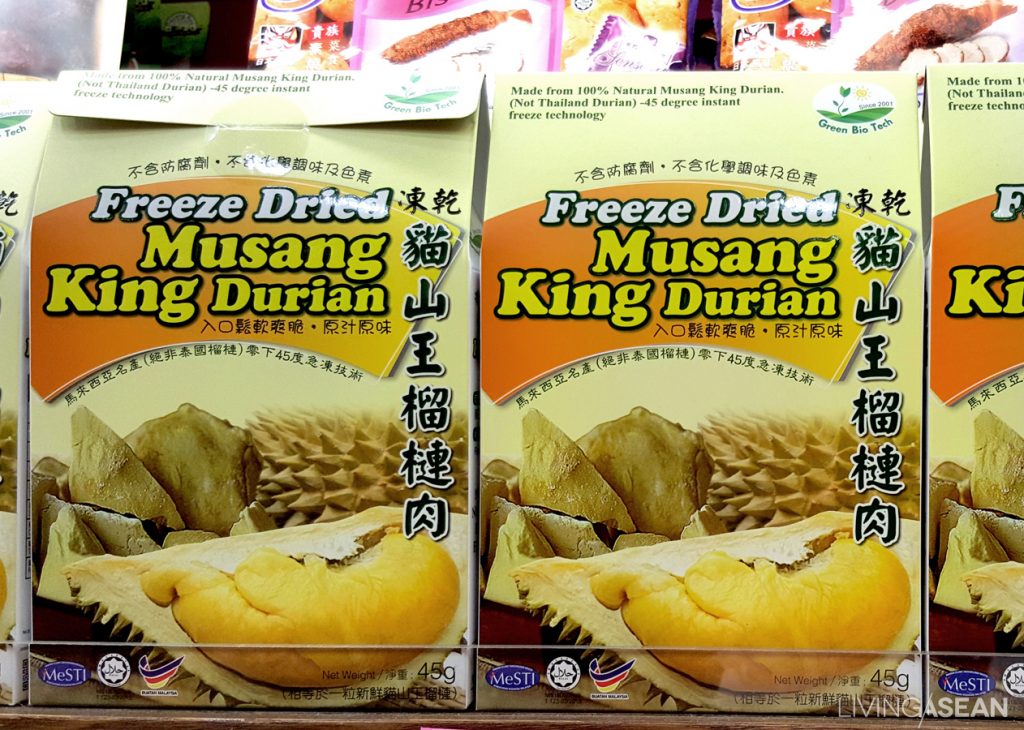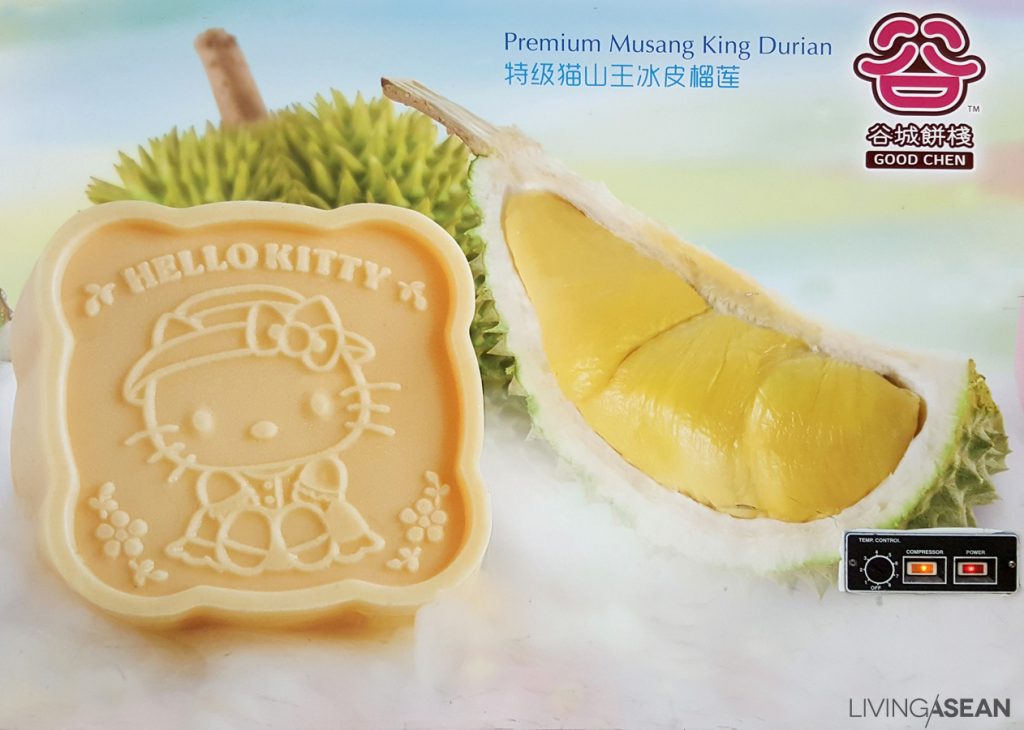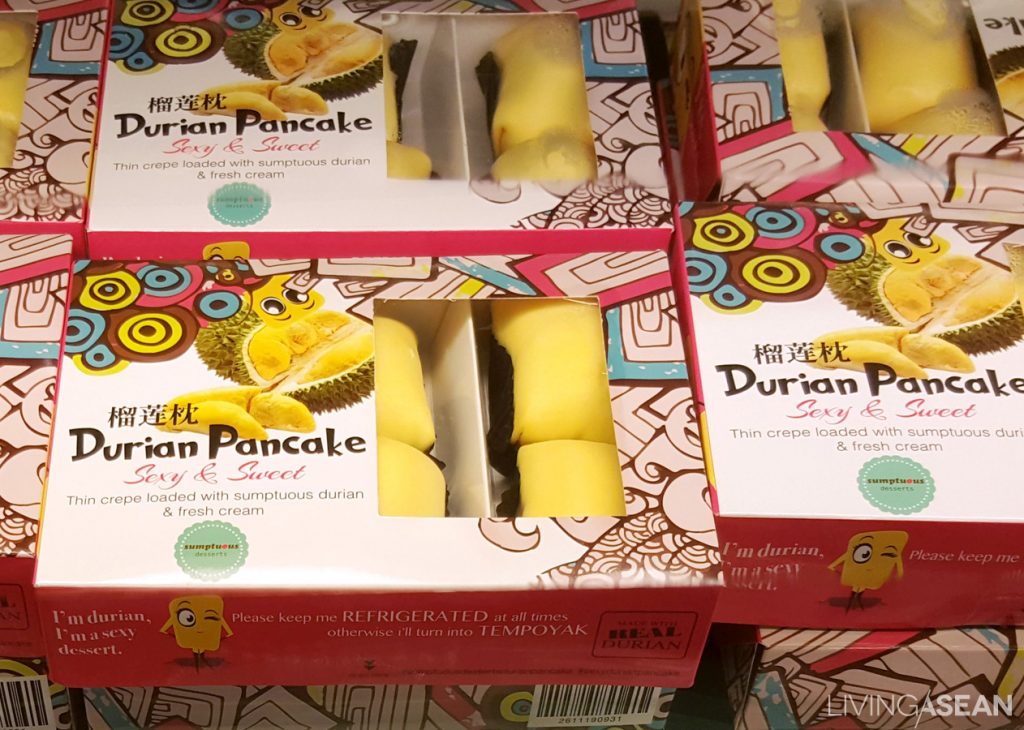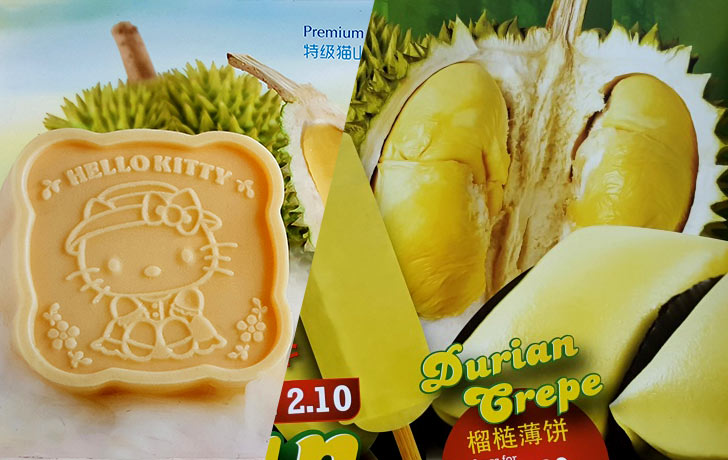/ ASEAN /
/ Story: Samutcha Viraporn / Photograph: Sitthisak Namkham, Samutcha Viraporn /
LivingASEAN proudly presents different durian cultures unique to the ASEAN region. Perhaps it’s something you have never heard of, including five interesting ways of making eating the spiky fruit more fun than you would ever imagine.
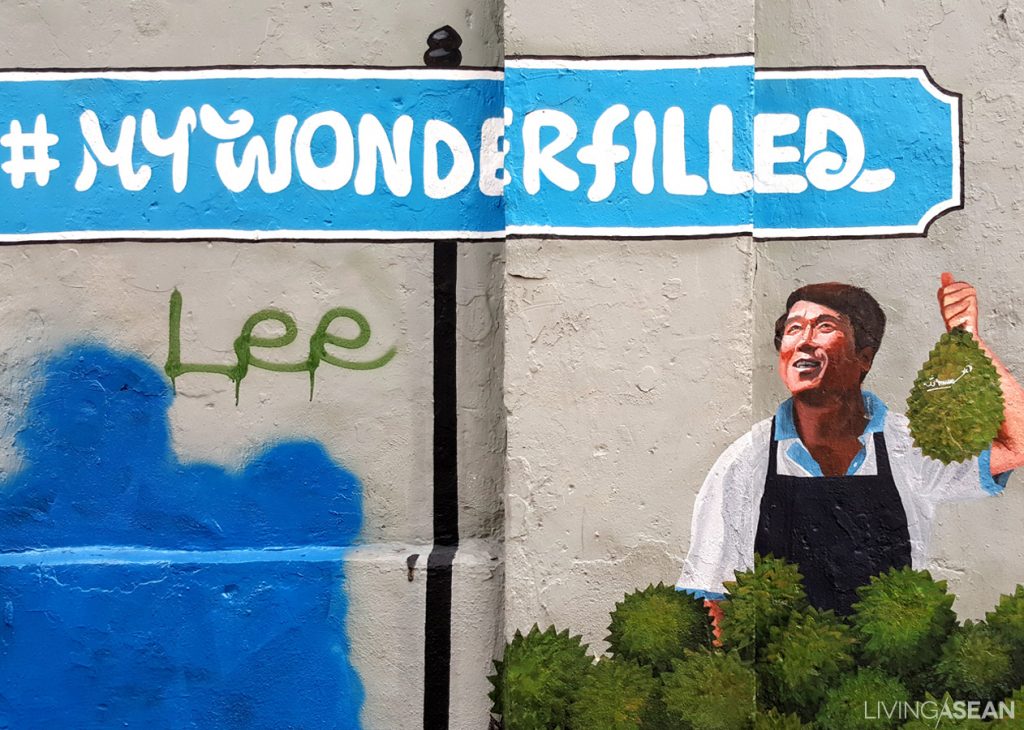
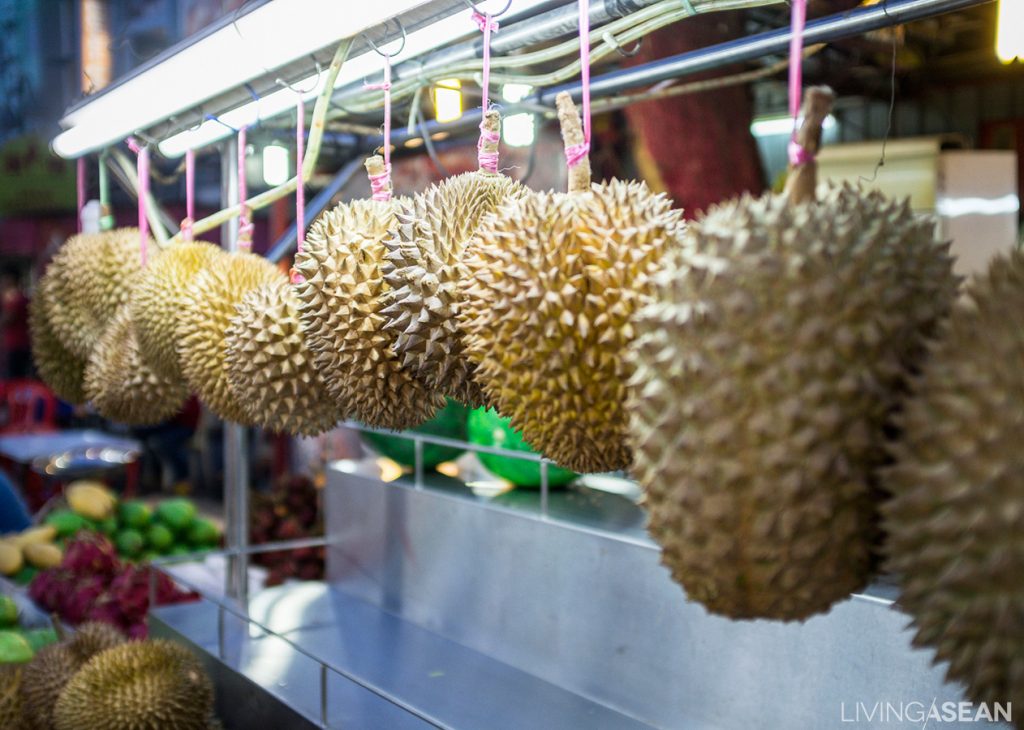
The majority of durians are grown in Thailand and Malaysia with other varieties available in Indonesia. Some are also grown in the Philippines, southern Vietnam and other Southeast Asia countries.
Thailand
Out of more than 200 varieties of durians in Thailand, the three most sought-after are Mon Thong, Chanee, and Kan Yao.
Mon Thong (meaning “golden pillow”) comes with a sweet taste and a firm texture. Chanee is smaller in size but less sweet, softer and creamier. And Kan Yao has mild, not-so-sharp sweetness.
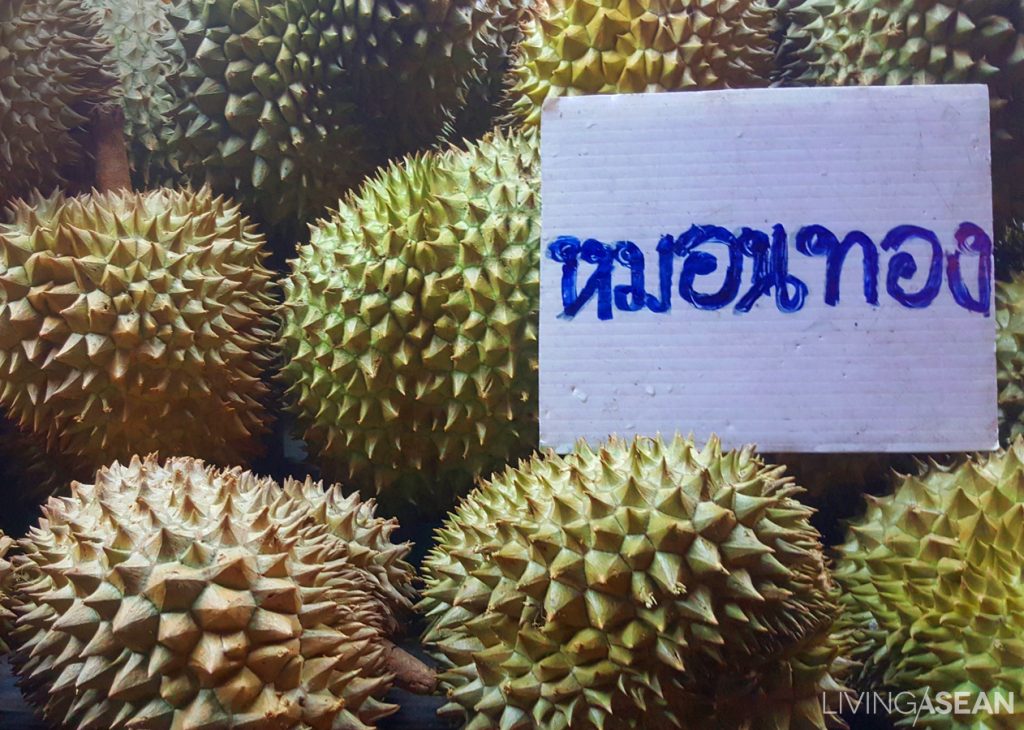
The quality that most Thais look for in the fruit is its firmness. Durian aficionados can tell a good fruit apart from plain ones simply by knocking on the spiky skin and judging the sounds. Hollow sounds tend to indicate the fruit is too soft. In contrary, solid sounds indicate the fruit is a firm one.
Due to their pungent odor, the spiky fruits are not allowed in many places including aboard the BTS Skytrain and the MRT.
Malaysia
Malaysians prefer their durians to be soft and buttery. In Malaysia, the fruit is eaten within the day they are ripe and drop from the trees to the ground. It is said that the best ones are the ones that fall down in the morning.

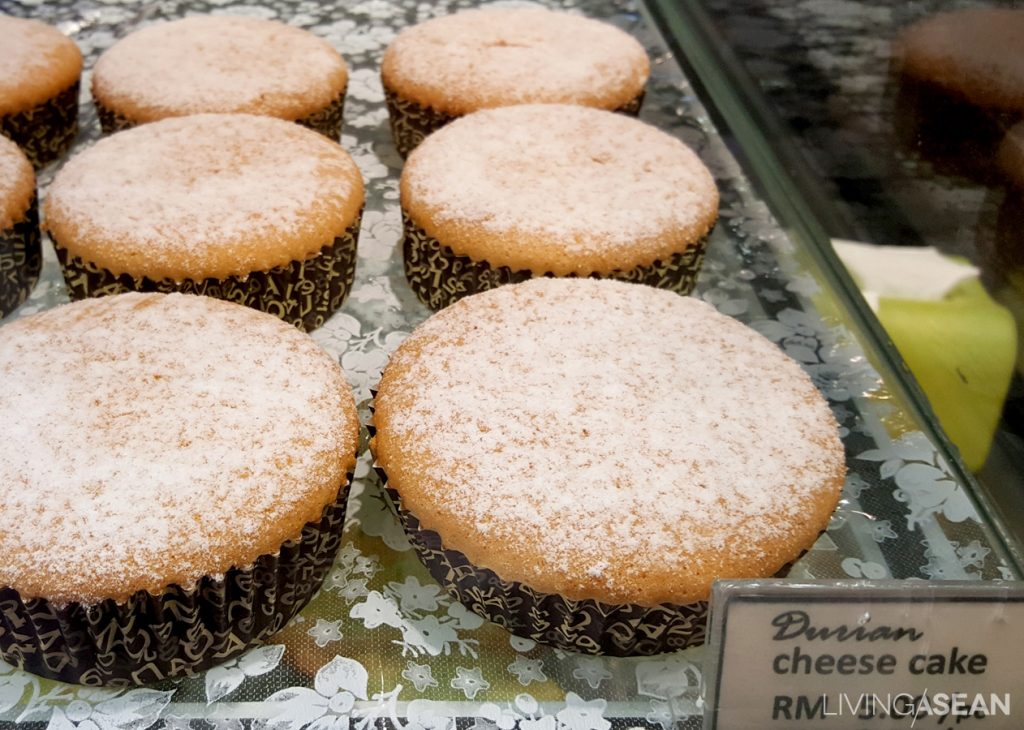
There are many products made from the fruit in different, perhaps quirky, ways that are available in Malaysia. They include durian-flavored ice creams, candies, cakes, pastes, freeze-dried snacks, and a wide variety of parfaits.

Indonesia
The keyword for getting a nice durian experience here is “Kampung”. In Malaysia and Indonesia, the word means “village.” So, when you visit a fruit stall, make sure to look for the “Kampung” sign. It means that the fruits are products of indigenous durian trees grown in the villages, and not from any genetically modified tree.

Often you will come across durians that are either too ripe or too raw. So, one useful thing to know is not to buy a fruit that had been cut open. It is a normal practice that a “Takung Duren” (durian seller) will always select the fruit, cut it open and pass on an amount of its creamy flesh for you to taste. After that it’s your turn to decide whether to take the fruit or ask for a new one.
Well, choose wisely. We hope you all have a chance to meet your fruit soul mate!
A little note to the fruit lovers: In an unfortunate case, you may encounter an unscrupulous vendor trying to sell you a rotten or spoiled durian for high prices. No need to overreact like a buyer did in this hyperlink: http://www.straitstimes.com/asia/se-asia/unhappy-with-quality-of-durians-malaysian-man-stabs-fruit-seller-to-death. Just keep calm and buy from other stall instead.
Creative Ways to Eat Durian
